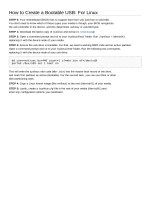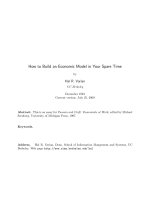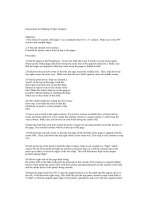LLF7+ +how+to+create+a+native+environment+in+your+own+home
Bạn đang xem bản rút gọn của tài liệu. Xem và tải ngay bản đầy đủ của tài liệu tại đây (1.81 MB, 28 trang )
HOW TO CREATE A NATIVE ENVIRONMENT
IN YOUR OWN HOME
LANGUAGE LEARNING FOUNDATIONS
Iwillteachyoualanguage.com
In this module you will learn:
The difference between work and play
How to create an immersion environment at
home
The best material for immersion
1. Work or play?
One of the big advantages of living
abroad is daily exposure to your
target language.
If you don’t live abroad, you can get
all the exposure you need by using
movies, books, websites and so on
as a substitute.
But don’t confuse work with play!
In module 2 we looked at the
importance of choosing materials
at the right level for you
Choose materials that are too
hard and your progress stalls
Beginners shouldn’t use materials
intended for native speakers
(movies, books, websites etc.) to
study with
Beginners shouldn’t use materials
intended for native speakers
(movies, books, websites etc.) to
study with
But they can be used very effectively
when you’re not studying to give you
extra exposure.
The difference between the two is vital:
Use your study time (work) to learn
Use your downtime (play) to get extra passive
exposure to the language
…just don’t make the mistake of calling it study
You’ll find it too hard and give up
2. Creating an immersion
environment at home
Creating an immersion environment
involves spending your time doing dayto-day things in the target language.
Many people find this hard because
they try to do the wrong things.
Here’s the trick to making it work:
1
Make a list of things you normally do to relax
2
Simply do these same things in the target
language
3
Your intrinsic motivation to do these things will
make you much more likely to follow through
If this sounds simple, you might be
surprised how easily ignored this
advice is.
For example, have you ever heard this
common piece of language learning
advice…
(You might even have tried it - I have!)
“You should read children’s books.
They’re easy to understand!”
Question:
When was the last time you ever read a
children’s book in your mother tongue?
It takes some thinking-through.
But let’s look at some examples of
useful immersion material.
3. The best material for
immersion
Immersion that works:
TV series (not movies)
Music (find & subscribe on YouTube/Spotify)
Regular computer tasks (news, Google search)
Podcasts (topics of interest)
Trick for finding podcasts:
You’re a Spanish learner & travel fan
Google translate into Spanish: “travel podcast”
Paste result into Google and search
THE LESSON
Work and play are not the same thing. Use your
downtime to get extra exposure to your language
without the pressure to understand everything.
For more on creating an immersion environment:
/>









